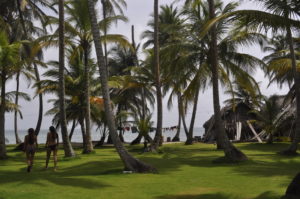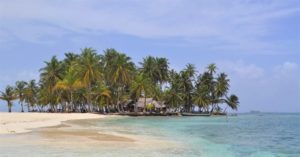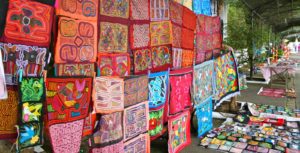If you want to discover exotic Caribbean islands, with irreplaceable natural beauty, and far from the mass tourism, the San Blas Islands are the perfect destination for volunteering in Panama. In this Panamanian archipelago you will find small islands with white sand beaches, turquoise water and surrounded by beautiful palm trees. Keep reading to find out all the curiosities of these Panamanian islands.
History of San Blas, the best destination for an international volunteering

These islands form an archipelago of 365 islands, of which about 80 are inhabited. The ethnic group that resides there are the Gunas. The gunas are organized independently from the rest of Panama, and have political-administrative legislation different from the rest of the country.
In 1925, the Guna indigenous people rebelled against the authorities of Panama, since they wanted to westernize the islands. This revolution lasted a few months, finally it was agreed to respect the traditions and autonomy of the area. Due to this event, the islands currently have an independent organization and culture, which means that in the San Blas region there is almost no infrastructure or running water, making it an almost intact paradise. This will allow you to fully immerse yourself in the customs of this ethnic group during your volunteering in America.
Tips for a visit to San Blas

To get to the island you can travel by plane to El Porvenir Island, where the capital of the archipelago is located, and from this island you can travel by boat or catamaran to the different islands. In many of the boats/taxis that you will find, there are small flags hanging that represent the Guna ethnic group. If you do not know the history of this ethnic group, you may be surprised by the flag that represents the Republic of Tule and the Guna revolution, since it is made up of two horizontal red bars at the ends and a wider yellow stripe in the center, similar to the Spanish flag. Additionally, in the center there is a left-handed swastika, although this flag is much older than the one used by the Nazi regime.
On these islands you will find different types of accommodation. If you are an adventurer and want to experience how the indigenous people of the area live, a great option to consider is renting a cabin or camping on the beach with a tent. The cabins have basic services, many of them do not have running water and the bathroom in some cases is shared. Despite this, they are located in front of the sea and you can enjoy the wonderful and unforgettable sunsets and sunrises from your cabin or walk a few meters and do it from the seashore. Sleeping to the sound of ocean waves and birdsong is priceless.
If you prefer more comfortable accommodation, you can opt to stay on a boat. You will also be able to appreciate the sunsets and travel to different islands, which will allow you to discover more islets and corners of the archipelago.
Culture of San Blas to discover while volunteering in America
You will find small stops where you can buy traditional fabrics and clothing from the area. The traditional clothing is the “mola”, which in the Guna language means “clothes”. It is made up of different layers of fabric, which are cut and sewn to show the lower layers that are of other colors. And this is how the characteristic geometric shapes of this textile art are made. Traditionally, the drawings were geometric figures, although designs of flowers, animals and landscapes have been added. These drawings are usually related to nature and Guna culture, and the predominant colors are bright and striking.
On many of the islands there are also small restaurants where you can have breakfast, lunch and dinner. The Gunas feed mainly on what the sea and nature provides them, therefore, one of the typical dishes is fish and seafood freshly caught from the sea. Imagine trying these tasty dishes during your international volunteering!
The main activities are snorkeling to observe the fish off the coast, visiting other islands, going on excursions to see starfish or bathing on the beach, sunbathing, relaxing and observing the paradise in which you find yourself.







